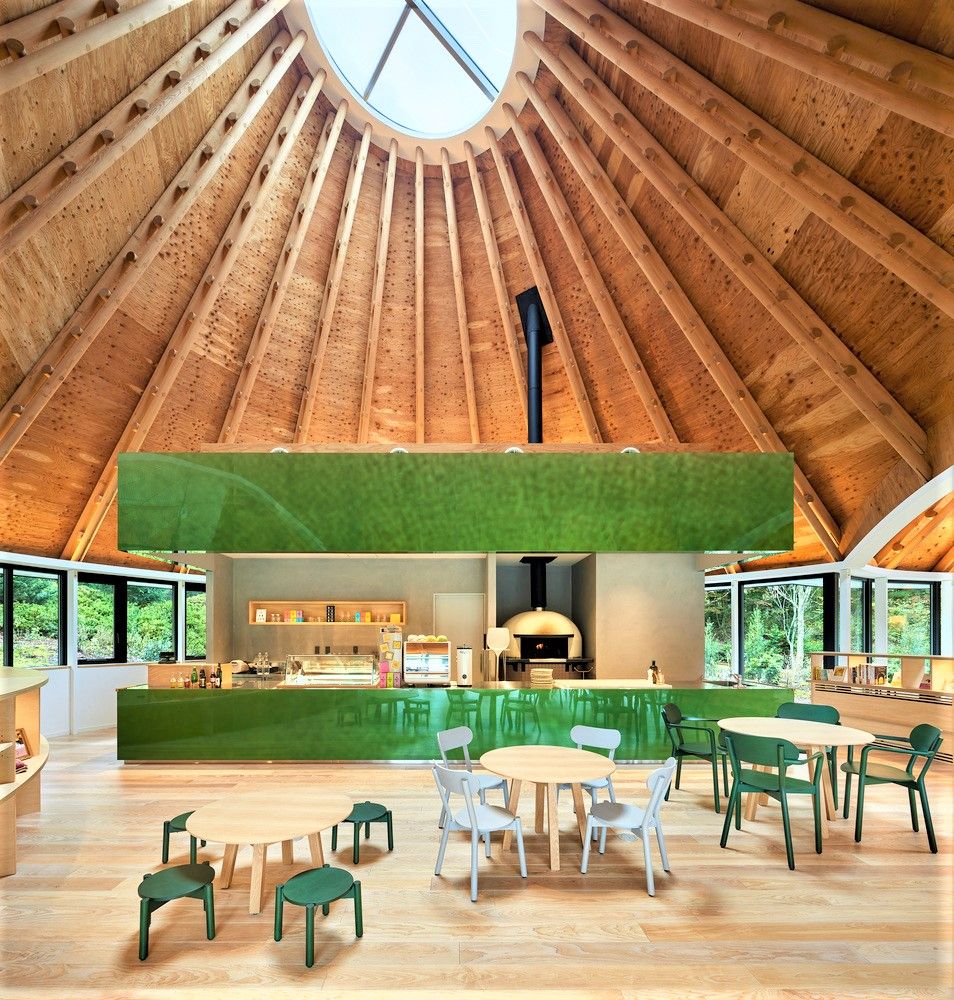The Nasu Highlands lay in the northern corner of Tochigi prefecture. It takes no more than 75 minutes by bullet train fromTokyo to the center of this lush farming region which is dominated by Mount Nasu.PokoPoko was born from a wish to connect two hotel buildings on the current site. The vision included an extensionand renovation of both buildings and rooms, an original smaller guest house from 1986 and its later addition, bringing the totalnumber of rooms on site to 40.A new footbridge forms a subtle link and between the two complexes a new path meanders through the lush forest. And like ina fairy tale, halfway there is a wood clearing with a contemporary cottage: PokoPoko. Like an icon, from afar 3 roof conespoke out lightheartedly in different directions from the top of the trees. And this is where the building get’s it name from as‘poko poko’ means to stick-out or stick-up in Japanese.The newly built PokoPoko is a family oriented clubhouse and activity centre for the guests of the hotel. Each roof cone has itsown function.The middle cone allows for cooking activities based on fresh ingredients grown on the hotel’s own premises. A variety of foodrelated workshops keeps kids and parents entertained preparing their own jams and pickles, while a big wood-log oven offersan opportunity to make their own pizza with vegetables and herbs just picked from the nearby fields.Within an adjacent cone a tall white net structure entices the kids to climb all the way up towards the skylight, while smallerkids can delight in a ball pool at the bottom. This indoor playground offers the kids the freedom to release their energy evenwhen the weather gets too gloomy to play outside.While the kids tire themselves out, parents can relax around the open fireplace under the roof cone on the opposite side. The hotel guests sit around the fire enjoying the 360° view to the surrounding trees.PokoPoko can be both a lively and a peaceful place, seamlessly connecting to the forest outside, making one feel like havingspent a day in nature even on a rainy day.The roof structure of the building is made from local pine. Two slender timber members with spaced off-cuts form beams,which rise from a lower steel ring beam to a smaller ring which is a part of the roof light. The beams are skinned with plywoodsheets to form a tensioned skin. A layer of rigid insulation is held in place by a grid of timber battens, forming a ventilatedcavity, which in turn gets skinned by another layer of plywood, which along with a breather paper layer forms the base for theshingle roof.The project has been an instant success and the hotel and clubhouse have been in demand as people look too to take timeout from Japans cities and head to the country side for staycations which are conducive to social distancing.
This website uses cookies so that we can provide you with the best user experience possible. Cookie information is stored in your browser and performs functions such as recognising you when you return to our website and helping our team to understand which sections of the website you find most interesting and useful.


